#i've been editing this for three weeks
Explore tagged Tumblr posts
Text
Crimes of the Future (2022)
Short non-spoilery review:
If you love to be grossed out and scared by movies, this one might be a disappointment. If you don’t, it might be more watchable than you’d expect. I would not classify this film as “horror” at all — it’s fairly tame speculative fiction with a surprisingly optimistic portrayal of the world and the main character. The horror aesthetic is wrapped around non-horror events; there is upsetting stuff, but it’s in the realm of tragedy or crime fiction. The premise of the film is that “pain has all but disappeared”, so the gory visuals and sounds are not accompanied by suffering — in fact, quite the opposite. My own description would be something like “transhumanist erotic sci-fi noir about having a conflicted relationship with one’s body”. If that sounds relevant to your interests, the film is worth watching regardless of its shortcomings. I thought that the execution of the concepts didn’t live up to their potential, that the worldbuilding and dialogue were weak — and it still inflicted days of intense brainrot on me. I can’t in good faith call it a great film, but it sure is thematically rich.
Below are ~9k words of my spoilery thoughts about bodies, health, age, art, gender, sex and some other things. I started writing this post as a review, but I’m not sure it counts as such by this point. I went into full fandom mode and poured two weeks’ worth of obsessive discourse blogging into a single text document. Warning: I have (hopefully temporarily) lost the ability to stay in my lane or shut up about my personal subjective experiences. I also made an abridged version that you can read instead.
Since the “review” got so long, I changed the usual order and put it before the liveblog. I assume that if anyone’s actually reading this post, they’d be more interested in something I at least tried to make coherent than in a long string of unfiltered first reactions.
Review
General thoughts
I’d been quietly obsessed with this film for a week before I had the opportunity to watch it. This means I knowingly stole from myself many if not most of the good experiences I would have had as a first time viewer. I’d seen the key scenes in gif form, and had a general awareness of the characters, themes, and plot. So by the time I got around to watching, I’d already been done feeling the positive emotions about the aspects of the film that directly catered to my tastes, and had too much time to feel dissatisfaction with their execution.
A bit of TMI: as someone who had spent the week before watching the film constantly coughing and able to sleep only with a raised pillow for several nights, and who is in general not on great terms with food and “the old sex”, I found Saul relatable in a rare way — much more than the characters close to me in gender and age (the usual criteria for representation). Sure, the plot is about him growing new organs and transforming into different species, but a major part of the character are his realistic health issues and alienation from the body. He has trouble eating, he needs to manage his pain constantly, he has to use special mechanized furniture, he has to sit down after walking somewhere, he gets (and, as far as the characters know, needs) regular surgeries; he compensates for the vulnerability of being exposed during invasive medical procedures by wrapping himself in black cloth from head to toe when in public, he struggles with conventional intimacy. The film is frustratingly vague about his experience of pain, but it seems like he’s immune to pain from cutting etc. like everyone else — and yet suffers from pain originating from chronic illness; the former makes him fantastical, the latter keeps him relatable. The elimination of pain and infection is by itself a futuristic power fantasy about health and physical wellbeing, of course. Speaking of fantasies, have you ever wished you could cut yourself open and remove a hurting internal organ? Well, Saul gets its done by the loving partner, and they get a career out of it! A good romance is always a plus, but I particularly appreciated a visibly chronically ill character who is in a functional and fulfilling long-term relationship, and is seen as attractive not only by his partner but also by someone who just met him. You don’t often see focus on health issues in genre film protagonists (unless it’s a disability+superpower blend), and for me, a character whose health is in worse condition than mine feels more real than a character with a flawless body that never gets in their way.
In other ways, though, the filmmaking perspective is all too familiar. The protagonist is a man, his love interests are women; conversely, the man is allowed to be old and sick, but the women have to be young, beautiful, and healthy. In a film about transhumanism and the meaning ascribed to human bodies, it’s conspicuous that the main characters are white and cis. Where are the people marginalized via race or ethnicity relative to whatever society this is set in, if there’s talk of some people being less human than others — and why the hell is the fascist cop the only black character?! Where are the intersex people who were subjected to violence for their bodies in childhood, like poor Brecken was? Where are the transgender people showing up to say “We fucking told you so, having a non-normative body and modifying it as you please is good actually”? Obviously I’m not against the very idea of a story that could be interpreted in multiple ways and compared to the experience of multiple existing social groups, but if you don’t acknowledge the existence of these groups within your narrative, it’s as if they don’t exist in the fictional world; it’s like making a fable about gay rights without showing a single same-gender couple on screen. Don’t get me wrong, I’m not saying “shoehorn in a token minority because it’s better than nothing”. But surely there are other ways to convey that they exist somewhere in the fictional world! In a film where a lot of the dialogue consist of philosophical exposition, it’s mostly about the characters’ personal opinions, rather than the positions of social groups and factions. There’s one tantalizing mention of “escapist propaganda”, but that’s the only hint at the larger discourse I can think of.
I knew I would ask all of these questions about representation long before I pressed play, but what I realized with the context of the entire film was that it was a general problem of the lack of worldbuilding and social awareness. The film’s scope is very small, restricted to the sphere of the protagonist’s personal reach. It’s about the body hidden in a black cloak or exposed in a surgical theater, about lying on a bed and sitting on a chair, about having a meal (or failing to), about taking a political stance or having sex in private vs in an auditorium full of people. But what is the society around that? What exactly is legal and what isn’t? Why is the National Organ Registry like that? What happened to the normal computers, why is digital technology used only in medical devices and one (1) kind of camera? How does the organic technology fit into all this? Is this post-apocalyptic future or alternate history? What exactly are all the different factions in relation to each other? If pain and infection have “all but disappeared”, what about Saul’s “pain centers” and the commercially produced equipment meant to manage them? If “only a lucky handful of us experience pain in our sleep”, how does LifeFormWare’s business stay afloat? Is there an inherent difference between acute and chronic pain in this world if the former is nowhere to be seen but the latter remains? How does elimination of pain and infection change society and its largest institutions — what happens to the army, police, prisons, healthcare? How do the standards of hygiene or access to clean food and water change when infection is not a concern? When did pain and infection disappear, was it both at the same time, was the process sudden or gradual? How long ago did that happen, how many people remember the world as it was before, how did living through the change affect them? What language are the film’s characters speaking in-universe, what is the geopolitical situation? You can see that lack of interest in the wordbuilding even in the UX of the surgery/autopsy remote: seems like nobody cared to make the buttons correspond to specific movements of the SARK’s limbs, so the actors just stroke them in whatever way is the most sensual.
Someone’s review said that the film feels like a mediocre adaptation of a good novel. I agree: the unfulfilled worldbuilding potential makes the film seem like a part of something bigger. We all like to complain about franchises and profess our love for standalone stories these days, and yet I can’t help but want to get more out of this premise. I can easily imagine it in a book (or series), a prestige TV show, a tabletop RPG setting. The film just came out, and I am already ready to fantasize about a remake or an adaptation that would fix all my problems with it! And not only problems, to be honest. I want to know what happens next: does Saul ever talk to Timlin again, do Saul and Caprice make his evolution known to public, are they able to escape persecution? Conversely, as much as I love the established romantic relationship, I’d also not mind seeing how they “unleashed things in each other”. (That could work just as well in fanfiction form, though.)
But the almost nonexistent worldbuilding is only my second biggest problem with the screenplay. The problem number one is dialogue. It’s bad. Star Wars prequel trilogy level bad. Sometimes perhaps worse. (Actually, the comparison with George Lucas might be more accurate than originally intended: this is the work of a visionary who really should have found a co-writer who would have reshaped his cool ideas into decent dialogue.) There’s an enormous amount of exposition, and yet it’s often unclear what history characters and organizations have with or what they know about each other (I’m thinking of the first scene in the National Organ Registry in particular). At times, neither sentence structure nor the word choices sound anything remotely like what a real person would say aloud (maybe their brains evolved first and they never noticed?) A couple of examples a very short time apart from each other that I just had to write down: - “I’ve heard that some of the Sarks that were modified for performance surgery have been really brutally hacked around, but this one was converted by someone with a very delicate touch.” - “Seeing you here, is like a lightning bolt from the blue. It strikes you very hard and very convincingly.”
The weird thing is, there is one exception: the dialogue is consistently effective when it’s humorous. The clearest example was when Kristen Stewart spent about two minutes straight on fighting for her life against the most forced monologue of all time, then a few more minutes later Viggo Mortensen closed the scene with a single very effective quip.
My top 3 of the funniest dialogue in the film:
“I’m sorry. I’m not very good at the old sex.”
“Careful. Don’t spill.”
“Why is he a corpse?” (two lines later) “You have the body of your son?” “Yes, of course I have the body of my son. He’s my son.” “Wow.” “Yeah, I know.”
Not only the dialogue, but the internal logic of the scenes and their staging are often illogical too. One particularly bizarre example: the scene that reveals that the purple bars are toxic. Why are the two technicians talking to some random guy? Why is Lang leaving his secret and deadly plastic bar on the table? Why is the random guy picking up someone else’s food and eating it? Why does Lang not bother to stop him?
Of course, there were also scenes where the way characters existed in their space drew my attention in a positive way. Some physical comedy highlights:
An instance of dark/hypocritical comedy where a character rants about human evolution that makes people too perfect with the lack of pain and infection, while Saul leans on the door, sinks to the floor in exhaustion and stays there. Nobody offers him a chair! Even Caprice leaves his side just as he slides down, and doesn’t bother to help him! Either this is thoughtless direction (which was my initial thought, tbh), or the characters are all assholes.
Timlin after the performance laser-focusing on Saul, quickly finishing her drink and getting rid of the glass without taking her eyes off him, and beelining to Saul’s seat to ask him “something intimate” without so much as a hello.
The scene in Timlin’s office is hysterical from start to finish. Her very awkwardly advancing and him somehow even more awkwardly moving out of range and hiding his face. Her prying his mouth open with considerable effort and looking inside like he’s a goddamn horse as he stares at her in mild confusion.
Kristen Stewart needed more screentime — I expected a full-fledged love triangle or maybe something more :c Her acting style is completely different from anyone else in the film. In her very first scene we see her on the left side of the screen while Seydoux is on the right, and they have a conversation like two characters who came from entirely different genres. But I can’t be mad at her overacting because everything she does is completely unhinged sex comedy. She has got to be one of the horniest characters I have ever seen on screen. She almost literally says “rearrange my guts daddy” at one point. Initially I wanted to open the review with the sicko meme but that’s redundant because Timlin is already an embodiment of it.
Whatever was happening to Saul and Caprice’s relationship never coalesced into a coherent storyline for me. I think they were supposed to have Marital Problems™, which is unsurprising when one of the partners is also the other’s collaborator, assistant, caretaker, and doctor. Caprice was clearly dissatisfied with her professional role: “Saul likes me to do the techno dog work. Keeps me in touch with my roots,” she says with clear resentment. That, I guess, was supposed to be solved when Caprice declared her intent to engage more creatively and actively in the shows’ planning and performance — but Saul reacted to that with a surprising lack of enthusiasm. You’d think he’d show more pride and interest in his girlfriend’s personal growth, but instead they both seem uncomfortable, and she even defensive. Another question: are Saul and Caprice in an open relationship, or are they cheating on each other? (I feel like whatever happened with Odile would count as a fling, even if it wouldn’t in our world.) They seem to talk honestly with each other (Saul says he finds Timlin attractive, Caprice repeats Odile’s “desire to be open” line), but in both cases the other reacts like they hate to hear about that. This also seemed like a natural starting point for a storyline that never happened. Perhaps I should take these scenes as a good sign: the two are communicating their honest feelings like adults they are, instead of suppressing themselves and putting on a mask even for the person closest to them. There was at least one undeniable, glaring communication issue, though: Saul going behind Caprice’s back to secretly work with the goddamn fascist cops. I was sure he’d come clean at the end! It’s not like I require characters to be pure and unproblematic, but the way these threads were left hanging made me feel unsure whether I imagined them or was just missing what the film was trying to tell me. I guess it bothers me specifically because otherwise the relationship is very sweet and romantic, and found myself strongly emotionally attached to it. What’s better than finding the one person in the world who understands and accepts your weirdness because their own weirdness perfectly complements yours!
I’m not really a fan of horror, body horror in particular; I’ve seen gifs from some of Cronenberg’s earlier work and found the special effects repulsive, and not in a fun way. I’m also a romantic who prefers uplifting endings. The only Cronenberg film I’d seen before was Videodrome, which had one of the most despicable protagonists I’ve encountered in recent memory and a very cynical perspective on sex and romance. It felt like a gift to me personally that the same director’s new futuristic sci-fi was centered on a heartfelt romance and took such a hopeful stance overall. Humanity will evolve past the problems that have plagued it since the beginning, and even direct that evolution. Nature and technology will find a new balance as humans gain the ability to lessen the damage their industry has done to the planet. People will adjust to their changing bodies and find new forms of pleasure and intimacy. Grotesque alterations of human flesh will be painless and consensual, even desired. And one man will be able to handle the tense antagonistic relationships both with his own body and with the world that demands different things from it, and he will have a supportive partner by his side.
About bodies, surgeries, and age
This is a film about eating plastic and enjoying surgery. Plastic surgery. Haha get it?
No, seriously, was the surgical CGI supposed to look plastic? It was pretty unconvincing, even before I went to look up some real-life videos. It’s not just the visuals but the procedure, too; as this review points out, “there’s no question of infection or, for that matter, of blood flow. Caprice sterilizes nothing, cleans nothing, suctions nothing, and closes up Saul’s wounds with a mere heat seal”.
Cronenberg himself commented on the previous point in this interview: “In the surgeries that we show, there’s not much blood, and in the real surgery, there would be much more. Of course, they’d be sweeping it away so that they could see what they’re doing, so it’s a little bit of a fudge factor — I’m sort of pretending that’s what’s happening. Yes, it’s open-abdomen surgery, but I think the context in the film is so specific and artificial fantastic that the gross-out factor is really diminished.”)
The same interview also highlights some important connections: the fictional old artist representing the old artist who created him; old age as the time when it becomes more common for human bodies to become reliant on and intertwined with technology, changing their senses and relationship with the world; the shared the experience of modifying one’s body as basis for interpersonal connection.
I’ve talked about the age gap before; Caprice didn’t have to be young, but it’s crucial that Saul is old. Even one of the first things we hear from Saul and Caprice is, on a thematic level, a conversation about his age: “I thought I was all tapped out. Dried up.” “You always think that, and you're always wrong.” “One day, I’ll be right.” “Not today.” His body’s biological productivity is the basis of his art which is the basis of his sex life. These are the words of an aging man dreading the approach of artistic and sexual impotence, knowing that deterioration is coming but not knowing when. The formation of new organs holds two thematic symbolic meanings: it is a disease that he seeks to get under control, but also the foundation of his lifestyle that he’s afraid to let go; both the presence and the loss of that process can be a metaphor for aging.
Many metaphorical interpretations can be made for Saul’s antagonism with his body. An old person trying to hold back the deterioration of their health. A young person horrified and disgusted by puberty. (I came up with this and then a few hour later realized I’d been halfway through an article titled “Art Is the New Puberty”, haha.) A public figure promoting plastic surgery and/or dieting, making a career out of fighting their body’s natural growth and removing the parts that don’t fit their idea of normality. And of course there’s the trans reading, which people more qualified than me have already written about. There’s even a connection with the more traditional horror trope of monstrous transformation: the body not accepting human food, the growing pains, the grotesque new organs.
There’s something I really like about Saul’s transformation as this film’s secret true horror element. The “body horror” that can be seen in trailers and screenshots is not associated with fear, suffering or violence — the qualities of the horror genre. On the other hand, the slow painful transformation of a human into a frightening, mysterious entity is a classic horror trope… But the way it’s represented in this film is via its most naturalistic element that I have praised above as representation: the protagonist’s health issues. When a character in a horror story transforms into a monster like a vampire or a werewolf, it is normally signified by outside characteristics like fangs, fur, inhuman eyes etc. But Saul’s transformation happens inside, invisibly to the viewer! It’s his internal organs that are transforming! Because it’s a film about the internal organs, about the hidden truth beneath the surface! Which lets the film hide its true horror content in plain sight. We see Saul’s food problems twelve minutes in! And we see Brecken eat plastic long before that. That should be enough to connect the dots, and I’m sure there are viewers who do. But there is so much else going on, and the performance is so naturalistic, that the side of the character that is most relevant to the main plot and to horror as a genre seems deceptively mundane.
Another contrast is the conflict between the best and the worst things about embodiment. The body as a conduit for pleasure, human connection and artistic expression, vs the body as a torturous and exhausting malfunctioning cage and the target of external violence and control.
The differences between our real world and the world of the film sometimes mean that the viewers’ and the characters’ ideas of normality are the reverse of each other. Something like tattooing a person’s internal organs (while they’re wide awake, too!) would be completely horrifying in our world, but for the characters with “plastic”, invulnerable bodies it’s intimate and domestic. Conversely, Caprice is shocked and horrified at the sight of a child’s dead body and the thought of doing autopsy on it, and she’s the person who regularly cuts her boyfriend open as sexy performance art.
That last point is actually very important for the theme of people ascribing meaning to bodies. I’ve seen people voice discomfort with the “surgery is the new sex” film culminating on a child autopsy, but I think that’s the point. There’s nothing inherently sexual in cutting someone open even in the film’s world. The meaning of the action is ascribed to it by its participants. This is something I see discussed pretty often in the real world, in relation to things like kissing on the lips or having a bath together. Or, within the film: the entire basis for Timlin’s statement that the surgery was sex is a simple projection on her part. She really walked up to a celebrity and said with her whole chest “what you just were doing in front of me was sex because I thought it was hot”. Okay!
Another thing about the child autopsy I’ve seen people comment on was the body’s nudity. I was a bit surprised by that myself, because in my memory of famous art pieces depicting autopsies the body was always covered. The same film takes pains to preserve its adult stars’ modesty, having them fold legs strategically, so this was a deliberate artistic choice. I felt like it dehumanized the body, treating it as just flesh on a slab… Which was probably the intention of the film’s director, but my question is: why would that the people directing the show in-universe, Saul and Caprice, want that effect? Doesn’t that contradict the humanizing message of Caprice’s speech? Either way, this is very effective at making me not want to post screenshots or gifs of this very important scene in case the platform takes it the wrong way.
More about the autopsy: Caprice only started taking the job seriously when she encountered the saw the child’s body with her own eyes. The moment it became real for her, she started crying reflexively and never really stopped. Do you think she felt guilty about the erotic “rehearsal” she had earlier?
Caprice’s lines about her sudden “desire to cut her face open” confused me, especially because she proceeded to add horn-like mods instead of something that evokes openness. I think I understand better now. That conversation starts with Odile saying “Oh, you have no idea how hard it's been for me to find plastic surgeons who understand that I do not wish to be made more beautiful.” Caprice in her performance looked like a very beautiful, very normal woman. Saul’s body gets to be interestingly gross and weird, but she could be seen as “normal” (if you don’t pay too much attention to the unabashed look of lust on her face, at least.) Altering her face and speaking during the performance makes a statement that she’s also a freak and proud of it, that she doesn’t want to be aligned with normality and palatability. The unblemished pretty face was a mask, and to put a crack into that mask it’s enough to make the face weird. In this interpretation of openness, it’s not necessary to literally show the inside of her body to the public like Saul does.
About bodies, comfort, pain, and furniture
More about contrasts and extremes: the smash cut between Saul and Caprice melting into a kiss so tenderly and comfortably to Saul painfully trying to force down a single spoon of breakfast, straining in his wobbly wheezing chair.
This furniture looks sooo uncomfortable btw 😭 As does the way Saul uses it. The bed doesn’t have a mattress and seems way too firm, there’s no blanket, Saul sleeps in his day clothes. (In fact, I’m pretty sure he spends the entire film in the same set of clothes, day and night…) The chair, too, would be a great idea in theory, but in practice we don’t see a single character who is helped by it, and I can’t imagine what good it could do except making the owner carsick in the middle of their meal.
At the beginning of the film, we see Saul and Caprice eat breakfast separately, and I thought it was a bit cold of her to sit comfortably in the sun while he struggles alone. But in a later scene Caprice keeps Saul company in the evening while he’s trying to eat. So maybe it’s Saul who doesn’t want to watch her easily eat normal tasty food while he can barely force down his dreadful purée.
Speaking of LifeFormWare, I don’t understand how the bed is supposed to interact with Saul’s pain. At first I thought it was simply pain relief. But at one point one of the technicians says: “Creation of art is often associated with pain, and pain, as we know, is always associated with sleep. We at LifeFormWare specialize in manipulating and modulating the pain of artists, and, to us, Saul Tenser is the greatest challenge, so intimate and involving in his art, and the nature of his pain. A good night's sleep is a hard thing to define when you're an artist and you seek pain.” (By the way, yet another endless sentence that no living person would under any circumstances say spontaneously aloud.) So what exactly is it supposed to do? Nothing about Saul’s onscreen relationship with his chronic pain seemed to me like he sought it…
To stay on the topic of pain, it’s remarkable that the justification for the society where people use surgery as sex and are obsessed with body mods is not “everyone is masochistic” but “nobody can feel pain”. These are two very different things! I’m glad the film went with the latter: it’s more original, more alien, and allows pain-as-the-general-audience-knows-it to be a negative presence in the protagonist’s life without making a distinction like “good pain” and “bad pain” (which would have been very confusing in a screenplay).
The practicalities of the body mods had me straining my suspension of disbelief. Sure, there’s no pain, but there are still other concerns! Even normal zippers are a pain in the ass when they catch on your clothes, imagine one doing the same to your intestine! Even if infections aren’t a problem, yikes! Is there a horrible little flesh flap inside to help prevent that? And how is that random woman going to walk after having her foot cut to the bone, is giving her a disability actually the point here, or if not then what is?
I want to talk again about Saul not changing clothes for an unknown length of time, unlike any other character. Is this part of his characterization as a sick old man, implying that he can’t keep up with with regular standards of hygiene? If he doesn’t change clothes, I assume he doesn’t shower either. Or is that more normative in a world where “nobody washes their hands anymore”? What other forms of personal hygiene have become obsolete? We see Brecken brush his teeth, so that’s still a thing at least. On another note, this is another example of the gendered double standard I mentioned before, where the male protagonist is not held to the same standards of physical perfection and glamorousness as his female love interests; both Caprice and Timlin wear a selection of distinct outfits.
About art
After all that, I still don’t really see how Saul is an artist. How isn’t he “just a glorified organ donor”, as the film’s primary antagonist (and the only black man, ugh) put it?
In the interview with Letterboxd, Cronenberg says: “It’s a movie about an artist who gives everything, including the insides of his body, to his art. […] When I step back, having made the film, I can say, ‘Yes, this is what art is to me: that you are really giving everything you have.’ And for me, “everything” is the body. That’s the most that you can give. I’m interested in performance artists, because they do that. A performance artist who alters their body in a permanent way is giving a lot. It’s a real commitment to your art.” Maybe I just disagree with his views on performance art in general… If Saul and Caprice were thinking of the extra organs as tumours, and of their removal as necessary and life-saving, how can that count as “giving” or “commitment to art”?
Cronenberg also gives similar explanations in this interview with Vanity Fair: “So the performance artists here are the avatar, the template of any artist who is passionate and aggressive and ambitious, opening himself up, opening themselves up, completely exposing themselves, their most intimate inner workings, offering them to an audience which makes them incredibly vulnerable to rejection to misunderstanding, to anger, and it basically, therefore, is the model of what an artist is.” This argument is more understandable to me, it works on a metaphorical level — but I still don’t really see how it makes Saul an artist in a literal way. By this logic, anyone who exposes themselves to an unusual extent to the public is an artist!
Artists other than the main couple didn’t present a coherent picture either. Someone who grafts ears all over himself but can’t hear through them as a hack, but someone who has gills cut on her face and says “What I do to myself is very traumatic” even though she can’t feel pain is brilliant and exhilarating?
The most convincing argument that I can see for Saul being a true artist is that there’s a theatricality in their performances we haven’t really been shown. In the post-Odile conversation, Saul says “You want to take over the Brecken show,” and Caprice responds “I want to perform”. Then they discuss the show’s structure. Earlier, Timlin says Saul “creates theatre out of” “the rebellion of his own body”. Perhaps there’s more to the usual performances than the surgery, but we haven’t been shown that because the film chose a different focus. We also see Saul work on the SARK, and the technicians praise the quality of his alterations, so maybe his contributions as a mechanic count too?
While Videodrome is about media and its power to influence the masses, the Crimes of the Future world has no media at all. Partially it’s a consequence in the film’s disinterest in institutions and large-scale worldbuilding, but it has an interesting effect on the main characters, making them truly independent artists. It seems that they are just famous enough to have the audience they need, and executives breathing down their necks are not a concern. Everything in the film points to their art being noncommercialized and authentic — including its erotic component, which in another situation could have been a cynical “sex sells” (or, as the closest thing to a villain in this film put it, “sexier means easier funding”).
On a more light-hearted note: Saul’s amused reaction to Timlin’s confession is very funny in the light of him being an author avatar. I can only imagine how many people told Cronenberg “Your films awakened something in me, thanks”!
About sex and also art
It’s nice to see characters in a healthy long-term relationship who don’t need to negotiate something they’ve done before many times (the surgery), but when improvising something new they either communicate verbally (Caprice clearly says what she wants in the naked scene) or successfully read each other’s body language (Saul shows off his zipper and Caprice doesn’t need to ask before proceeding). There’s very little drama in any of that (as opposed to films where sex scenes are used to show characters getting together or growing apart), just character development and worldbuilding.
I’m pretty sure we never see the main couple kiss until the very end of the film. The progression of what the viewers are shown: sex in public, then sex in private, then a romantic kiss. It’s a fun reversal, and makes sense for an established couple.
Do these scenes form a storyline that decouples Saul’s identities as an artist and a lover? The starting point is the big scene that establishes the status quo: performance = surgery = sex. Then there’s the scene at home with the role reversal and the “this is just for us”. Then there’s the zipper scene where Saul and Caprice have a conversation about art and sex (which is, frankly, not the best written or most coherent dialogue in the film):
Caprice: Have we just been made obsolete? Saul: No, of course not. It’s just a functional thing. It’s a zippered fly; it’s not art, It’s not sensual. Besides, remember what our Registry friend said: sex is surgery. A zipper can’t replace our Sark. Caprice: I think she said “surgery is the new sex”. Besides, zippers have their own sex appeal.
I can’t follow the train of thought very well, but it seems to me that Saul is making the argument that only something artistic and high-effort can be truly erotic, and Caprice provides a counterargument in words and in action. Once again it’s Saul who is fixated on the artistic performance and Caprice who advocates directness and spontaneity (aligning with the more traditional gender roles in this, unlike their roles during the surgery).
Then there’s Caprice’s epiphany about wanting to be even more direct and in touch with her emotions (to which Saul reacts with strange, almost dismissive coldness). After that comes the kiss with Timlin who is desperate to be in his show but loses her nerve after a couple of seconds of awkward coughing from him. And finally, an opposite of that — the big romantic kiss with Caprice in the middle of the night in his bedroom, placed between the two scenes where he chooses his side in the ideological/physiological battle, which implies that his artistic period of pruning his “rebelling” body is coming to an end. Perhaps Caprice’s recording of his plastic meal will become his last performance.
(I haven’t mentioned whatever Timlin was doing to Saul during their first scene together because it doesn’t really feel like a part of this storyline. But. I just want to give a quick shout out to that moment so that you don’t think I missed or forgot about it.)
The phrase “surgery is the new sex” is also interesting because the wording here implies that surgery is not a type of sex, but “the new sex” i. e. a different thing that eclipses the original in popularity and is used for similar purposes (intimacy and pleasure, in this case) but doesn’t necessarily achieve them in a similar way.
It’s really a shame that we never hear how Saul and Caprice defined what they were doing before a creepy stranger came along and they started using the “new sex” phrase she coined. What language had they been using the entire time before? I am once again asking: where is the discourse, what do the various groups of people in this world say about the new developments in human sexuality? We see people cutting each other in dark alleys instead of making out etc., are they outliers or is this a general trend? “It’s time” for “the new sex” for what reasons exactly — only cultural or also physiological? Did the shift in the human perception of touch also lead to the collective loss of interest in the previously common sexual practices? If that’s physiological, where does that evolutionary road lead in terms of reproduction? How have the changes already affected the relationships between genders, the institution of marriage, the industries that deal with health or sex? Does this solve the problem of abortion access? Saul and Caprice’s thing is remarkably healthy, but how many dark counterparts do they have in people who are pressured into unwanted mutilation to keep the interest of their partner or commercial audience? Or is that escalation held back by the lack of mass media and advanced communication, making Saul and Caprice pretty extreme by the entire world’s standards? What are the communities, identities, common points of contention in this world? It seems like the world changed within a single lifetime, so how did people handle that? Are there bestselling memoirs like “I was a masochist for 30 years and then there was no more pain in the world”? What do people like that think of our main characters?
Of course I have a similar question about the opinions from the real world. So far I haven’t seen any serious discussions of this film as kink representation, and I want to know what people are saying. Certainly this feels astonishingly more positive than the scaremongering I saw in Videodrome. Also curious how this film and Cronenberg’s work in general compares to ero guro as a genre, I’m not familiar with it at all.
This film is the latest example of the very fun kind of media that makes me feel like I’m an alien in a human sexuality college class. *taking notes* Seems like some humans find the concept of touching one another’s bodies on the inside and not just on the surface erotic by itself, instead of only practicing penetration for pragmatic purposes! Weird, and even weirder that it’s news to me at this age, but okay! Or maybe it’s just Cronenberg, who can tell, certainly not me!
Every scene in the film where something erotic is happening passes every criteria I can think of with flying colors. They’re all important for the plot, themes, and character development; they’re not vulgar or violent or offensive; they’re not unexpected. Still, I couldn’t help but feel slight irritation at how much trouble R-rated films are logistically if you don’t live alone, regardless of the quality of adult content. Took me a few days to find a good time window…
The order of events in the film is one hell of an icebreaker. Usually I get a bit squicked when camera gets right into the characters’ faces to show kissing, but the scene with Timlin was so far into the film that by that point I was like “I’ve already seen this guy’s liver. I don’t care if I see his tongue, actually. Whatever.”
About genital symbolism
Viewer who has only seen Videodrome, watching her second Cronenberg: if I had a nickel every time this guy’s movies featured a stomach pussy I’d have two nickels so far, is that a coincidence or am I going to be rich?
To be serious for a second: in both films, the addition of an orifice resembling a vulva to the protagonist’s body is supposed to unsettle and disgust the audience; it is meant to be unnatural for a viewpoint character to have such a thing on their body, and its presence disturbs the bodily integrity and creates an image of vulnerability. Here are some features that the yonic orifices have in both films: a body part that does not belong on a “default” body; artificially and invasively produced for someone else’s benefit instead of being an integral part of the body; a hole instead of a functional organ; an orifice for inserting things, and not for either having things come out of it or even not being disturbed at all. In other words, the way yonic wound imagery in used both of these films reveals a patriarchal perspective in which people without vaginas are the default/the subject, while vaginas and the people who have them signify the Other/the object and exist in relation to the former.
Years ago, I complained about similarly misogynistic writing in “The Thirty-Six Lessons of Vivec” from Morrowind; in it, the cis male writer gives the androgynous (and often interpreted as intersex) protagonist a weapon that symbolically represents their genitals, with the phallic shape (a spear) and the yonic name (“Milk Taker”) — except, as you can see, the supposedly yonic part is also phallocentric because the misogynistic writer could not conceptualize a vagina beyond its utility for a penis. Same thing as the misogynistic real life etymology of the word “vagina” as “sheath, scabbard”, or, conversely, the “-ussy” words.
To give credit where it’s due: in this film, the yonic slit is created consensually and used for mutually enjoyable sex with a woman, unlike the violent insertion of the cassette and whatever was happening in there with the gun in Videodrome. Progress! But this is the brand new latest work of a very old and prolific artist, and I wonder how long it took him to get here. Hopefully I’ll have better informed opinions when I’m more familiar with Cronenberg’s filmography. Though I kind of spoiled his entire body of work for myself when two weeks after writing this part of the post, I came across an academic article about this exact topic… (Sounds like his early films were horrifically misogynistic, ouch.) If anyone has other good links with analysis of “offputting vagina” imagery in cis men’s art, I’d be interested, too.
About gender roles
On a similar note of the man as the default subject — this time in the sense of being allowed more interiority. I really love the tender scene at the end where Caprice and Saul have nightmares after the autopsy and comfort each other. It took me several rewatches to notice that it’s only Saul who talks about his nightmare. The only thing Caprice says about her own is “I almost thought I was feeling,” and it isn’t even clear what she meant (at least to me). Because it’s important to show the viewers what the man is thinking and feeling, the contents of the woman’s mind don’t matter so much, just infer them from the context! I understand he’s the protagonist, but I also think the audience is supposed to think of them as equals, and this approach undermines that.
The artistic collaboration between Saul and Caprice involves a refreshing role reversal. Usually the woman would provide the body, be it as a model or as a canvas, to represent the unthinking, instinctual, sensual side of the process, and the man would be the one holding the brush, purposeful and intellectual. Here, it’s the man who grows new organs without control or intent (but perhaps out of subconscious, repressed instinct) and provides his body as raw material that is tattooed and surgically sculpted by the woman while he lies back passively — and it’s the woman who holds the tools and even calls them her paintbrush on screen. For the audience of the surgery, it’s the man who is reduced to a collection of objectified body parts, his torso exposed (stripped not only of clothes but also skin) and face irrelevant.
Saul’s black outfit has many ambiguously gendered connotations. The masculinity of Aragorn’s hooded or Batman’s masked silhouette in the dark and Wanderer above the Sea of Fog, plus the femininity of black clothing covering him from head to toe and leaving only the eyes exposed like a niqab, plus the genderlessness of a monk or a nun’s robes. The mysterious heroism, the Romantic loneliness. The type of body that becomes the subject of ideologically-driven government control and public debate. The denial of the body and its sensuality, its removal from the gendered paradigm.
Saul’s black clothes also mirror Caprice’s white clothes, and in the kiss scene their bodies almost form the Yin-Yang symbol. The roles are reversed: the woman is Yang (light, active) and the man is Ying (dark, passive).
About “natural” and “artificial”
In a previous section I used the phrase “artificially and invasively produced” in the negative context of sexism in art. I wanted to make a note that the film actually celebrates the artificial and the invasive, but immediately realized it was more complex than that.
The motivation for Saul and Caprice’s invasive procedures is to preserve the “natural”, original state of his body by removing the growth presumed to be invasive and hostile. On the other hand, there’s what the government fears and the plastic eaters want: the results of surgeries being preserved and passed down genetically. Both sides use the same word: respectively, “It was all natural. He was born that way” vs “The first to be born with a plastic processing digestive system. To be naturally unnatural.”
These two threads intersect in the pivotal scene where Saul and Caprice defend the former worldview and Lang Dotrice defends the latter. It is not only a theoretical ideological clash; one of the two arguments is backed by nature itself, and it’s Lang’s, even though he doesn’t live to see it. Body is reality. The reality cannot be denied. Saul has to either die or accept what nature has chosen for him. Or has he done it, subconsciously, himself? The film asks the question of how much input Saul has on what’s “cooking” inside him, but never gives a definite answer. What is clear, though, is that the film takes the side of accepting the “natural” state of one’s body, of growing past the futile attempts to control and fight it. The relief and joy of finally being at peace with one’s body is portrayed as a transcendent, spiritual experience in the final shot of the film. Does that mean that the film’s position is ultimately against surgery? After the happy ending, the couple will probably stop removing new organs, so their performances must end or at least change in a major way — does that mean the film presents the surgical sex of the performances as a distraction or even a mistake? The assistive chair goes quiet, not needed anymore as the protagonist is transformed by the acceptance of his body — does that count as a miraculously cured disability? I’m not sure, but the film’s position is definitely more complex than it seems at first glance.
About the cinematography
When we see Saul’s room for the first time at the beginning of the movie, the visuals of the shot just bother me. The blurry landscape outside looks greenscreened in. The light is supposed to be coming out of the door to the balcony, but the room and especially Caprice’s body are much more noticeably lit from the front, from a secondary light source or a huge reflector.
In the window kiss scene, whenever Timlin raises her hands, for some reason it throws a soft rose/red light on her neck and face. Very distracting.
Nice parallel: Caprice looking intensely at Saul during the first surgical scene we see (when she’s operating on/having sex with him) and during the last one, the autopsy (when she says “Let us not be afraid to map the chaos inside. Let us create a map that will guide us into the heart of darkness” to him and about him — her mind clearly changed since the argument with Lang and her line “We’re making art out of anarchy” in it).
Great excuse for shifting into black and white for the final shot. I haven’t seen The Passion of Joan of Arc, but I think I get the idea. Actually I’d seen the screenshot comparison before the film itself, and it had me very concerned about Saul’s fate — so getting to the end of the film and realizing the real context was a relief.
About genre and similarities to other things
I said above that I don’t see this film as a horror film, but there’s a caveat. Horror does have a presence in it — not just drama and tragedy and revulsion but the actual emotion of horror. The main characters are not monsters or survivors — but they witness horror. And it leaves a mark on them: Caprice is inspired to “not be afraid to map the chaos inside”, Saul chooses a side. We watch them pull each other closer after the destruction of someone else’s family gave the both of them nightmares. Saul and Caprice are also themselves artists of the horror genre, creating gory spectacles that shock and unsettle the audience. So the autopsy is a multi-layered horror event: other people do something horrific and violent, Saul and Caprice make a spectacle out of showing it to public, and their roles shift from the creators of fake tame horror to the audience of real violent horror.
This film being classified as horror because of its painless gore is also funny to me because “icky and uncomfortable to watch, but the characters enjoy it so at least the empathetic reaction is positive” is that how I usually react to entirely ordinary sex scenes in media. Welcome to my world!
Weirdly, this film reminds me of Stalker. Both because of the general aesthetic and atmosphere, and because the plot is thin and the characters are mouthpieces delivering author’s opinions on abstract discourse with little personal touch. Stalker is way better visually (at a horrible real-life cost) and has smoother direction and dialogue, but despite its reputation I found Crimes more thought-provoking (as evidenced by the length of this post) even if less articulate. Curious how the philosophy of the two films is directly opposed: Stalker is a Christian’s complaint about “the victory of materialism” while Crimes of the Future is an atheist’s rumination on “body is reality”. The former declares viewers like me to be its ideological enemy, the latter resonates with my own worldview (which is why I went so unhinged with this post). Now that I think of it, there’s also something that reminds me of Dostoyevsky: the contrast between gloomy naturalism and characters who are deep within their own heads (or up their own asses).
Things I didn’t understand
The purpose of the beauty pageant subplot — I think it went nowhere.
The meaning of Caprice’s speech during the autopsy — did she also realize that the organs were faked by the government, or did she play right into their hands? To be honest, the autopsy scene didn’t work for me on most intended levels — I was confused by the organs, and Caprice’s speech didn’t make sense ideologically or emotionally. It’s supposed to be the film’s Big Dramatic High Point but it feels like a misfire.
Had Saul and Caprice interacted with the Registry before? How much were the two bureaucrats familiar with them by the time they met in person? There’s a lot of contradictory information in the relevant scenes.
What was Timlin’s worldview? How come she was the one to actually coin the film’s “Surgery is the new sex” motto, seem to be actively interested in futuristic bodies and modes of interacting with them — and she still ended up working against the most futuristic faction?! How did she expect that to improve her chances of “being Caprice for him” and not to completely destroy them?!
When Timlin talked to Saul, Caprice asked “What was that all about?” and he said it was about art, did she hear the conversation and joke about how weird it was, or did she not hear it, ask him about the content and get a lie as a response? Oh wait, found the answer to this one myself: in the zipper scene, Saul quotes Timlin’s words from that scene inaccurately and Caprice corrects him. So she heard everything. Leaving this one in, in case someone else has the same question.
Caught rewatching the scene: at the beginning of the film, the National Organ Registry guy tells Saul and Caprice: “Our fear is that some of these neo-organs might establish themselves genetically, and then be passed down from parents to children, who would then no longer be, strictly speaking, human.” At the end of the film, the plastic-eating guy says that’s what happened to his son, Saul says that “sounds insane”, and Caprice doesn’t argue. Were Saul and Caprice also not paying attention?
If the plastic eaters became plastic eaters after “the same elaborate surgery” “developed over years of collaboration”, and the only other known way to acquire the mutation is to inherit it genetically, how did Saul spontaneously and independently gain the ability to eat the exact same material as they do? We see Dr. Nasatir have struggle with his food in the same way — has this mutation started to occur spontaneously in people who are messing with their insides in other ways?
What is the goal and ideology of the two technicians? Is LifeFormWare a separate faction with its own ominous goals, or are these two women New Vice’s moles within LifeFormWare?
Why is Saul sleeping on the floor at the end? Did the technicians sabotage Saul’s bed? Did he decide he can’t trust them and their technology? Did the bed malfunction all by itself? Did he roll off because of the nightmare? My first assumption was that the bed threw him out, which is pretty scary honestly.
When Caprice says “I almost thought I was feeling” at the end, what does it mean? Was she dreaming about physical pain? Or is it supposed to be a last-minute reveal that pain wasn’t the only sensation/emotion that people lost? If people completely lost the sense of touch and can feel only what in the real life would be agonizing, that should have been established early because it would affect everything about the way characters interact or simply exist on screen.
Here’s one not about the film, but about the audience reaction. I don’t understand why people keep calling the setting dystopian. It doesn’t seem much more oppressive than real life — in fact, the authorities seem absurdly powerless. The one step back compared to our world is the lack of computers — but even as an extremely online person, I think I would have given up the internet in exchange for no pain or infection for every single human being worldwide. Please, where can I find a devil to bargain with and sell TikTok in exchange for no COVID? If anything, I actually thought this world was almost utopian, and a pretty interesting take on the concept at that; not a sustained utopia, not one built on a cracked foundation and currently in decline like a certain podcast season, but a world on a rocky road to becoming one. This is the future liberals (me) want!
If you’re still reading the post, thank you! The “review” is over now. Next are the notes I took during the first viewing. (Obviously, I had to look up so many scenes while writing this post that I rewatched almost the entire thing already.)
Liveblog
I’ve read all the warnings and was prepared for this scene. Wasn’t even as bad as I feared. Very sad though
Haha the horror music for the high-tech bed Is the balcony greenscreened in? The lighting doesn’t look right
Wait is she just having a look or tattooing his insides?
What is this chair even doing future assistive technology sucks
“National Organ Registry” in a place like this?! What is the state of the world here, is it post-apocalyptic? Or just a small poor country? I Don’t Believe That Man Has Ever Been To Medical School. Or law school for that matter
The difference between Seydoux’s realistic performance and Stewart’s overacting is hilarious. They’re on screen at the same time but they belong to totally different genres. Stewart’s character is so unbelievably horny on main from the first second we see her lmfao
Stewart’s quite literally playing the “haha yes” sicko
Is he upset about the tattoos in general or the specific one Caprice gave him?
Are we gonna get any worldbuilding details because it’s wild. High tech medical devices with seemingly organic elements but pre-computer paper documentation… Tiny ring-sized digital cameras but also uhh film cameras?
How does the audience even see anything? I see only one screen it’s transmitted to, and it’s tiny
Whatever genre everyone else is in, Stewart is in a sex comedy
Why does the new character look so much like the murder mom
“Why is he a corpse?” (two lines later) “You have the body of your son?” “Yes, of course I have the body of my son. He’s my son.” “Wow.” “Yeah, I know.”
Did he leave it on autopilot or something? Doesn’t that defeat the point? I’m no expert, but I’ve always assumed that if your partner says “keep going”, your next step shouldn’t be to stop what you’re doing and lie down to cuddle.
“What I’m saying with that body-art stuff is that I don’t like what’s happening with the body. In particular, what’s happening with my body, which is why I keep cutting it up.” Aw :(
Do I want to google wtf a “stoolie” is
“I’ve heard that some of the Sarks that were modified for performance surgery have been really brutally hacked around, but this one was converted by someone with a very delicate touch.” “Seeing you here, is like a lightning bolt from the blue. It strikes you very hard and very convincingly.” WHAT IS THIS DIALOGUE. DID GEORGE LUCAS WRITE THIS
Where are they? Did she catch him in a random alley on the way home?
Does the bearded dude want him too?
I still don’t understand what is supposed to be legal and what isn’t. Anyway why is Stewart’s character crying “I’m sorry. I’m not very good at the old sex.” How come every normal line the worst writing I’ve ever heard but every funny line is comedy gold?
Do Caprice and Saul have an open relationship or are both of them just very willing to cheat?
This is at least the second time I see Greek alphabet. Are they just in Greece?
“Has it ever occurred to you that you might simply be interfering in a fantastic natural process that you should surrender to?” I’m desperately trying to remember where I’ve seen this story before
Alright, so the moral dilemma for the protagonist has finally crystallized: does he deny his nature and betray the other “mutants”, or does he stand with them?
How many goddamn factions are there
Hold on, didn’t Caprice want to be the one cutting?
I don’t get it. How are there tattoos on the inside? Why is this supposed to be ugly if the tattoos on Saul’s internal organs weren’t?
Oh okay the tattoos were faked and in truth the kid was “all natural”. So the film isn’t siding with the fucking eugenical police. That’s a relief
Ohhh I think I see what is going to happen in the remaining 13 minutes. Saul will publicly cut himself up to reveal what the plastic-eating bodies actually look like.
Noo, Timlin did this?! Why?! I thought her bad vibes were in the opposite direction!
“It’s going to make him a martyr. Just what the cause needs.” Well that’s good news at least
I like the fakeout where at first it sounds as if the two are having “old sex”. Did the technicians sabotage Saul’s bed?
She really should use a normal stationary camera. How the hell does it look when she opens the plastic bar while the camera is on her hand, it must be just shaking footage of the wall!
Yay for self-acceptance! I’m glad the couple remained a team until the end, I was really rooting for them.
Wait, what was the beauty pageant subplot for?! And what was the meaning of Caprice’s speech during the autopsy — did she also realize that the organs were faked by the government, or did she play right into their hands?
#crimes of the future#liveblogs and reviews#gender and sexuality#blah blah blah#can't believe i am finally posting this...#never putting all my thoughts into the same post again#i've been editing this for three weeks
1 note
·
View note
Text
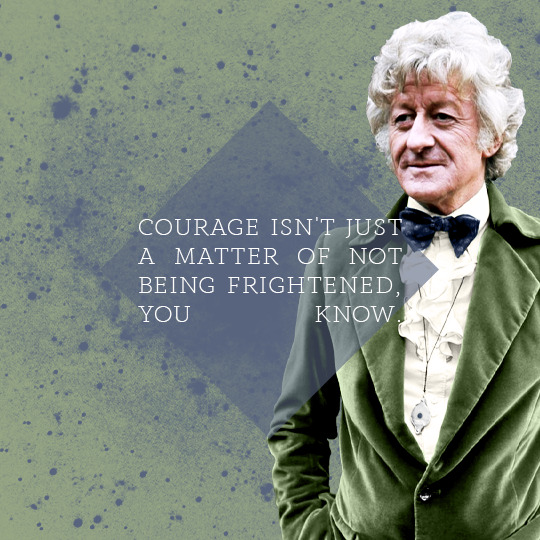
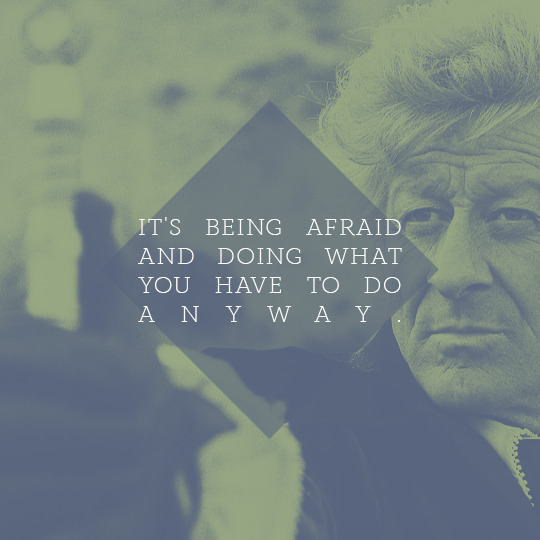
You're serious, aren't you?
About what I do? Yes, not necessarily the way I do it.
#dwedit#doctorwhoedit#doctor who#cdwedit#cwedit#classic doctor who#classic who#classicwhoedit#third doctor#thirddoctoredit#jon pertwee#jonpertweeedit#*mine#*edits#i've been watching/rewatching some three serials over the last few weeks#i've got planet of the spiders up next wahhh#three my beloved i just adore him what a doctor#my favourite classic doctor i think#i cackle every time he says 'hai!' i'm sorry i can't help it#this is very simple but i've never done that text effect before it's pretty cool
324 notes
·
View notes
Text
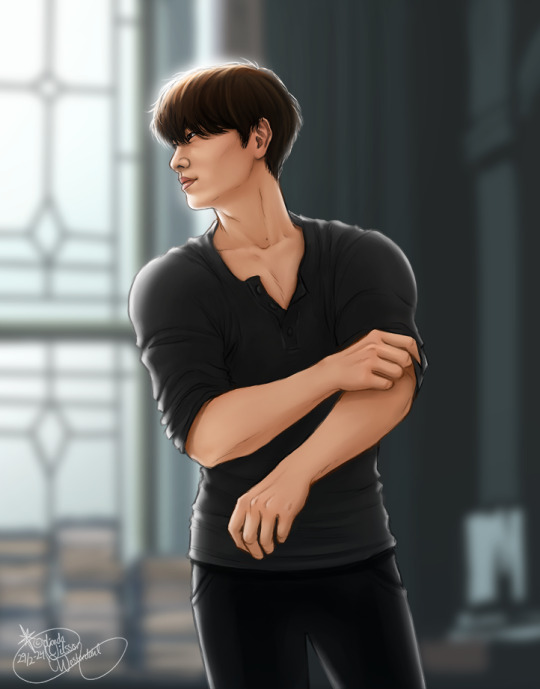


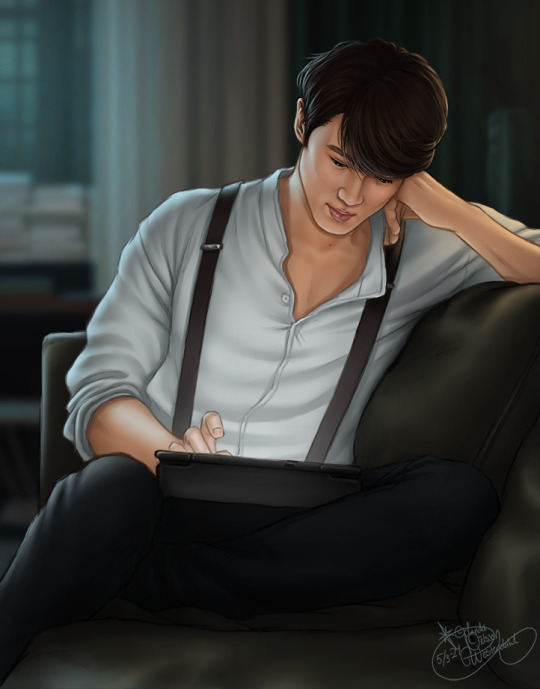

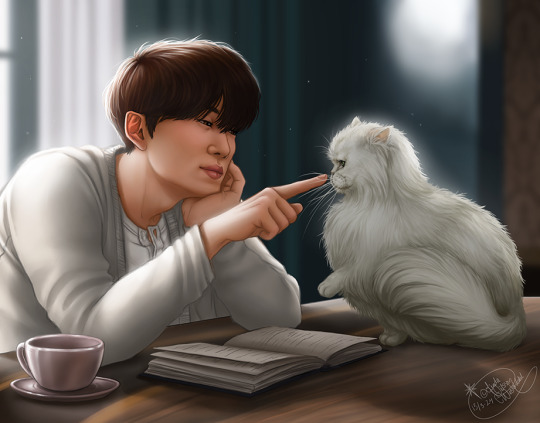
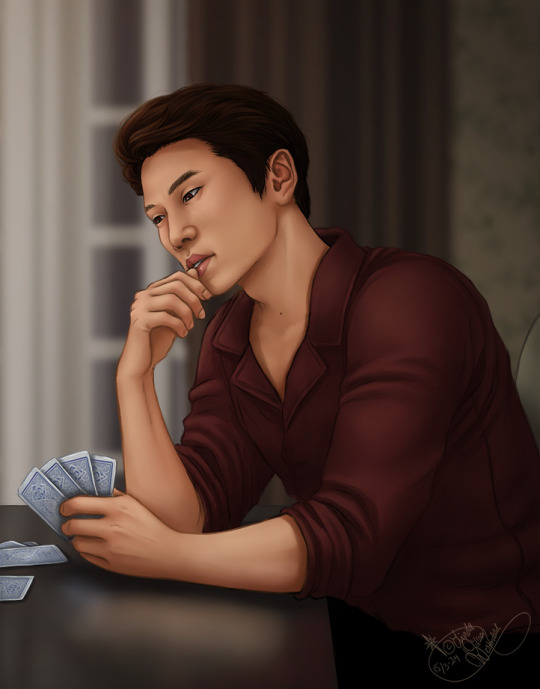
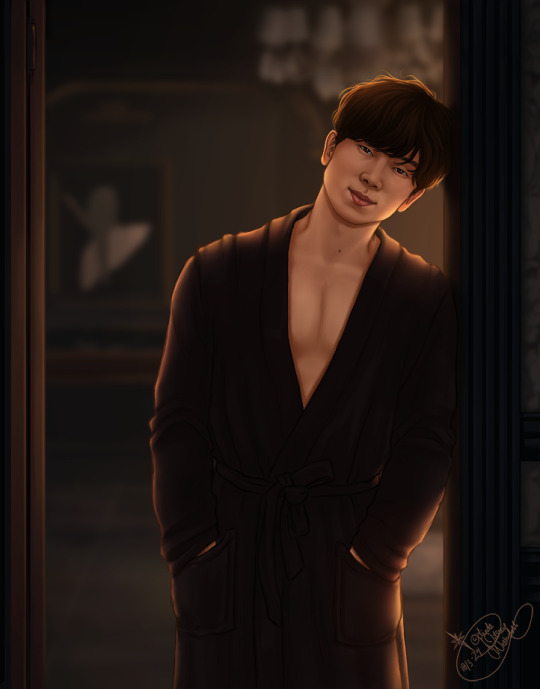
Kang Yo Han in his natural habitat, as observed by Kim Ga On
OR
You want to fuck that old man so bad it makes you look stupid
#The Devil Judge#Kang Yo Han#Gahan#Art#Fan Art#KDrama#Well#The Gahan is implied#If not before then definitely after that last sketch#This is what I've been doing the past three weeks xD#Just drawing a lot#Because I wanted to practice on sketching#And colouring those sketches in a way that's quick but also looks good#The difference between the first and last sketch is kind of hilarious#Especially on the skin#Improvement: Speedrun Edition#These took between three to seven hours each#And I'm very happy with them!#Even if they're also far from as perfect as I could make them if I spent more time on them#But the whole challenge was to not overwork them#So yeah#These are still sketches in my eyes xD#I'm getting REALLY good at the blurry backgrounds
309 notes
·
View notes
Text
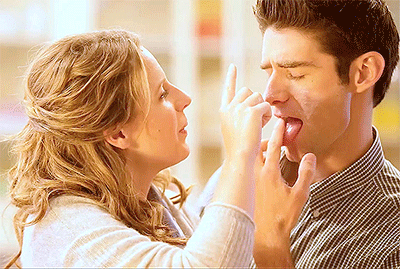


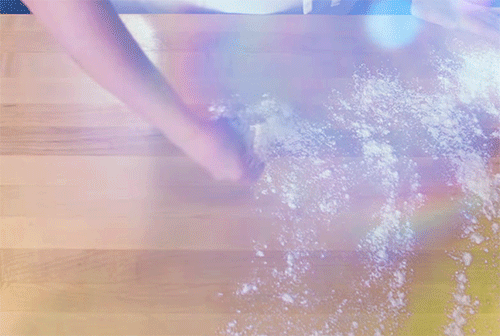

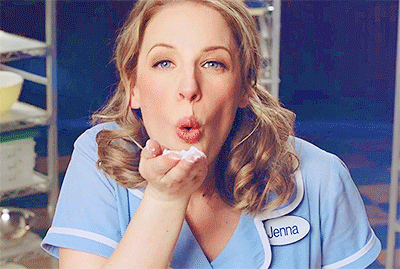
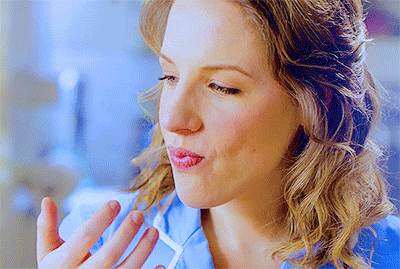

GET TO KNOW ME ✰ [1/10] Musicals ⤷ Waitress (2016)
"when your breaking point's all that you have, a dream is a soft place to land. may we all be so lucky."
#waitress musical#waitressedit#usercossette#sara bareilles#drew gehling#charity angel dawson#caitlin houlahan#jessie mueller#gtkm#my gifs#my edit#userpenny#em.musicals#em.waitress#i saw waitress three times in the last two weeks and it's pretty much all i've been thinking about#and my love for jessie 😭#and sara#this took way longer than it should've lmao
146 notes
·
View notes
Text

#kamen rider blade#kenzaki kazuma#tachibana sakuya#I've been meaning to make this edit for like three weeks#kamen rider
144 notes
·
View notes
Text


The resistance has fallen. Mac and Layla and their friends have been driven out of Los Angeles and are hunted down by Matrix Corp, the corporation now proven to have played a rather antagonistic part in the pandemic that unleashed bloodthirsty zombies upon the world. With no foot to stand on and no safe home to fall back on, the group has to trek back into the wasteland to reunite with some old friends— in hopes to find the stability they need to work on a plan to take Matrix down once and for all. But strange things are happening in the wastes of the United States. Ghouls are becoming smarter, and stronger— and the sudden appearance of a series of strange and hostile settlements tells the group a new player has entered the game, and they are out for blood. [SEASON ONE HERE] // [SEASON TWO HERE]
taglist (opt in/out)
@shellibisshe, @florbelles, @ncytiri, @bialanwake, @stars-of-the-heart;
@lestatlioncunt, @katsigian, @radioactiveshitstorm, @estevnys, @adelaidedrubman;
@celticwoman, @rindemption, @carlosoliveiraa, @noirapocalypto, @dickytwister;
@killerspinal, @euryalex, @ri-a-rose, @velocitic, @thedeadthree;
@kanos, @swordcoasts, @ordinarymaine, @claudiawolf, @strafethesesinners;
@mnwlk
#all that's left#edit:misc#nuclearedits#it's taken some time but i have finally managed to make a playlist for season three as well :]#i know i keep putting st.arnaud songs on the lists but the music hits JUST right for the vibes of the whole universe ok#it's such a specific vibe i'm aiming for which is why putting together all the playlists has taken me so long NGHFDGJDGGJD#according to the playlist in spotify i've been working on it since october 2020... and i finished it like. this week. man#it has already been in the making for longer than that though. the story at least. i'm pretty sure i started writing in 2016-2017#anyway if this is the first edit you're seeing i highly recommend checking out the other two as well!! gives you more context :]#and as always my askbox is open if you're wanting to know moreeee <333
29 notes
·
View notes
Text








when we met, I could see dark signs— alarm bells in your eyes.
#the sims 4#ts4#ts4 edit#ts4 screenshots#tjf: extras#ch: Sabrina#ch: Nolan#HI FRIENDS I'M ALIVE#just turned 28 like a week ago and that's wild#can't say i've been great but i'm!!! still!!! kicking!!!#also can we talk about that fricken pose search extension#where was that when i was posting three simultaneous sim stories LOL#ANYWAY MISS Y'ALL#missed these guys too#saw this pose pack and HAD to use it on them#this was my first time in game in like two months LOL#also HAD to link a sleep token song#u feel me~#HOW HAS EVERYONE BEEN#IS ANYONE STILL HERE#KNOCK TWICE IF YOU CAN HEAR ME
41 notes
·
View notes
Text
I'M SO BAD AT PHONE CALLS TO THE CAR PLACE HELP
#nobody laugh at me but I just accidentally scheduled an oil change#I dont need an oil change.........#I just did one two months ago and I haven't driven my own car since then!! I need a BRAKE SYSTEM EVALUATION#I do NOT actually need the oil change.. plezs.... sir i just want you to tell me what you need to do to fix my car#HELP. AUGH. AUGH#PLEASE I DON'T UNDERSTAND CARS#and the guys at this car place are so busy it makes me panic and say yes to things I don't mean to augh augh augh#Robin having stupid problems over here#ok im gonna call them back#OKAY EDIT. I DID IT. I CALLED THEM AND HAD THEM CHANGE THE APPOINTMENT#WHOOOOO#I've been procrastinating on this for three weeks y'all it's been BAD#I think I deserve a huge treat for doing this. I should uhhhh I should go outside and listen to birds for ten minutes
17 notes
·
View notes
Text
(´・ᴗ・ ` )
#Alright lil blog update. Running the reblogs queue again tonight (yay!). Been procrastinating it for like? four months now?#I'm not going to fix the order anymore in a crazy pattern that only I can see. And like the point as always been#“it's only for myself‚ because I like seeing the posts all ordinately lined up ☺️”. But it does start being a problem when.#It actually blocks me from reblogging alltogether. Or makes me end up with 978 posts in the queue and 15584 in the drafts#(lol) (yeah)#Anyways had to write it down publicly because last time I said “screw it I'm not going to post in order anymore”#I lasted exactly one (1) day#Mmmmmmmmhhhhhhhh#I need to make space in the queue so I've set 20 posts in the night / morning for the time being.#Probably going to tag less because again. the posts are piling up. Sorry everyone#So like... After this string of disappointing (and possibly irrelevant?) updates. Feel free to unfollow me etc. etc.#(Mututals included? I really hold no bad feeling I know I post a lot. I don't care about mutualism if we're friends we're friends)#Have a nice day / night!!!#random rambles#Btw for anyone wondering my previous queue lineup was 4 fanarts / 2 other category posts / 4 fanarts / 2 other category posts etc.#(other category could be like. gifsets together. analysis together. textposts of approximately the same length together etc. )#And fanarts had to be coherent between each other for characters / composition / oftentimes color palette#Anyways. Winning over ocd today 💪💪#(I say as I didn't pick this month specifically because the second half of the year starts together with it. Anyways)#ManBreakingChainsMeme.png#Edit: Just remembered this all started because I accidentally hit shuffle queue two or three weeks ago#When it happened I had a mental breakdown and cried for two hours but looking back. Maybe it was really godsent
13 notes
·
View notes
Note
would you mind telling us when you plan on posting the next chapter? i smile just thinking about the black family shenanigans that could ensure!
When I finish writing it.
#sorry but last time i made a sort of promise a person flipped out#when i didn't meet it#so i just don't make promises anymore#pretty soon tbh#I've been working pretty steadily on it and just have one small section to transcribe#and one to finish#and then the whole thing to edit#in the next two-three weeks lets say#the black sheep dog
12 notes
·
View notes
Text
ultrabright colors and gradation map my beloved
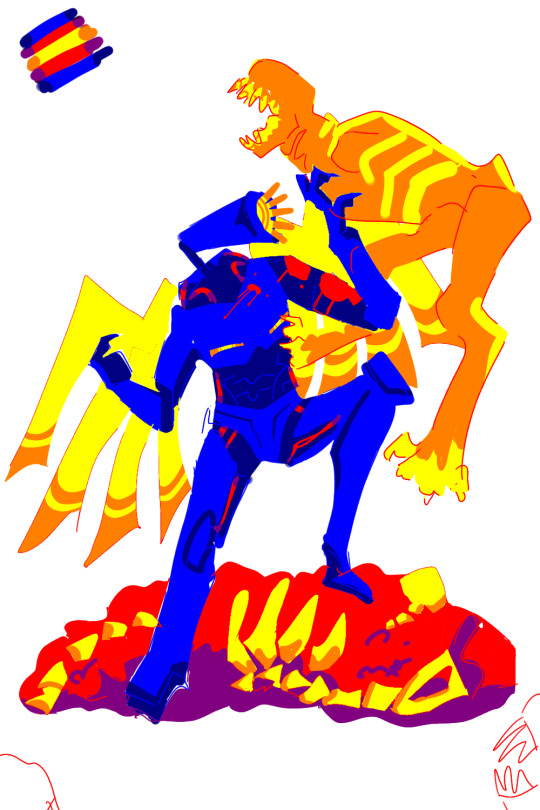
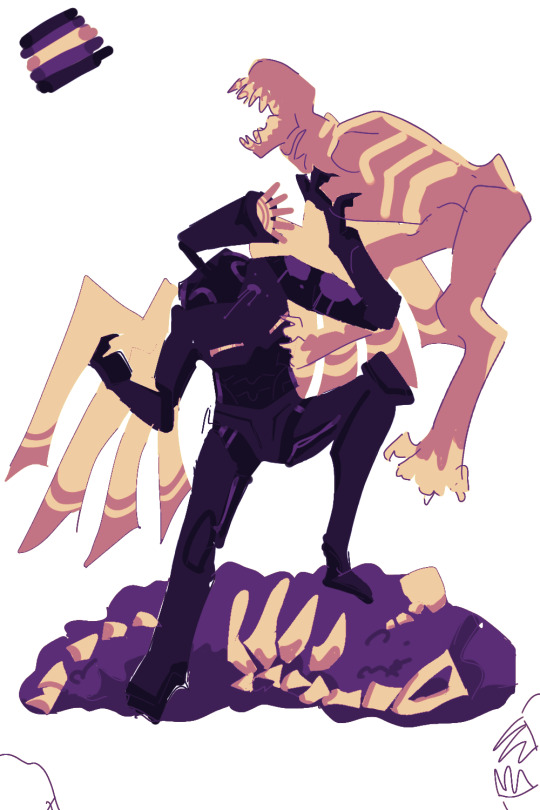
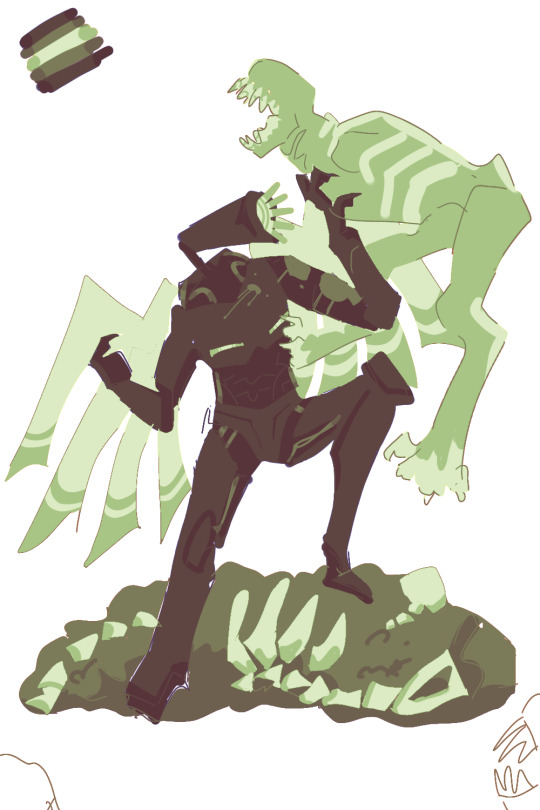
[Start ID. Three color variations of the same messy sketch on a white background. Each one depicts V1 from Ultrakill, in the same pose as the protagonist on the cover for Doom. They're standing on a pile of gore rather triumphantly and lifting a Husk with one arm, by where its collar would be. The original drawing was in bright red, yellow, and blue, and the two others are in much softer palettes, one shades of green and the other purple through yellow. End ID]
#so. funny story I have been working on two things that I can only share here on the 25th#one is stagbells and that took up the majority of the past three weeks. like ''longest I've ever taken on a drawing'' majority#and obviously to wind down from that the solution is Play Bloodiest And Most Intense Game You Own#i prommi I'll make refined ultrakill art someday but for now you get the doodle I made while a christmas song was stuck in my head#still new to writing ids I hope this is good#may edit it later#blood#gore#< ?#eyestrain#v1 ultrakill#husk ultrakill#ultrakill#bots#peridots-art#ask to tag#filth ultrakill#< coming back OCT 11 2023 to realize i got the tag wrong. oops
66 notes
·
View notes
Text
Everything day
#Had an Extremely long Game Day with smol today and I think it fixed my brain so that's great news#Past week has been rough!!!! Got hit with a semi-minor anxiety episode and a pretty serious depression episode to bookend last week#I'm all good it's just - took a bit out of me lol#Any number of things really too many to list so I'll just sum up as blegh - feeling better now#Started a new printing project!! Looking forward to that hopefully gonna do some test printing tomorrow#It Should work out well but pfbtl I can't count on my formatting skills for nonsense - shapes wtf are those#Been drawing <3 Been writing <3#Thinking quite very seriously about returning to doodle roots something awful#I tend to spend a Long Long time editing my stuff down by three different phases#Makes them very pretty! But I think I've had enough of that for the moment#New! Novelty! Needed and necessary and I'd rather Write about these than fuss more about how Pretty Or Not they are#They're pretty enough! I've made shapes on paper that previously didn't exist and now I can think about them as they are! Magic!#So that's the current plan - do still have One more step of editing to do before that lol but smol had offered me videos to listen to during#Good to have longer videos so I'm not constantly start-and-stopped#Oh and Pepper went into molt Again and just came out and he's genuinely gigantic now#And so dark! Handsome boy was a nice soft brown when we picked him up and so tiny small and now he's nearly black and huge#And so furry now he's definitely at least twice as fuzzy#Got him to eat - he was definitely hungry but he seems to be pacing himself still#Everything everything
3 notes
·
View notes
Text

(Mostly.)
#I've been quiet for a while because I've been so exhausted#haven't touched my computer in a week except for some editing I had to do for someone IRL and I was still half asleep for that#got a reprieve from the long shifts today tho so more awake#gonna do those three sentence fics that have been in my asks#ngl tho I probably will go quiet again#maybe not right away because it's supposed to rain Monday so it won't be long hours if it does just normal hours#and my day tomorrow should be short because I'm not on the crew doing the long shift#but I also have a bunch of other things planned for tomorrow because we weren't gonna work at all so uh#probably not gonna do much on the writing front
9 notes
·
View notes
Text
got a "free" tag from @bearsizedant for this funky picrew! so...thank you?😅 honestly, it's become one of my all time favorites picrews now <33
the first three are my (probably?) canon Tabris, Hawke (how she looks like by the start of Inquisition), and Adaar
then we got my newer Hawke, and my three Inquisitors: a Cadash and two Lavellans


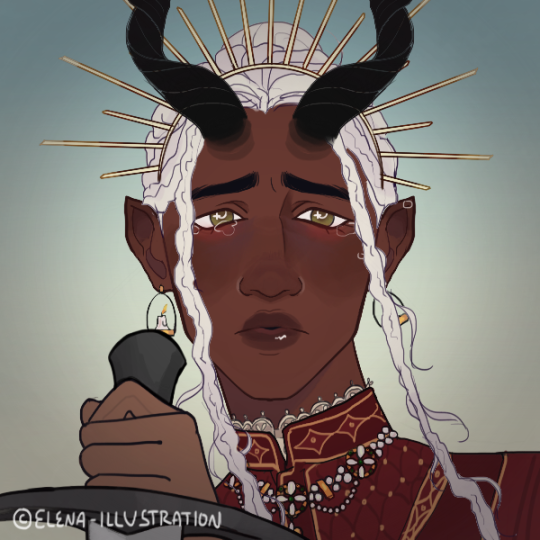


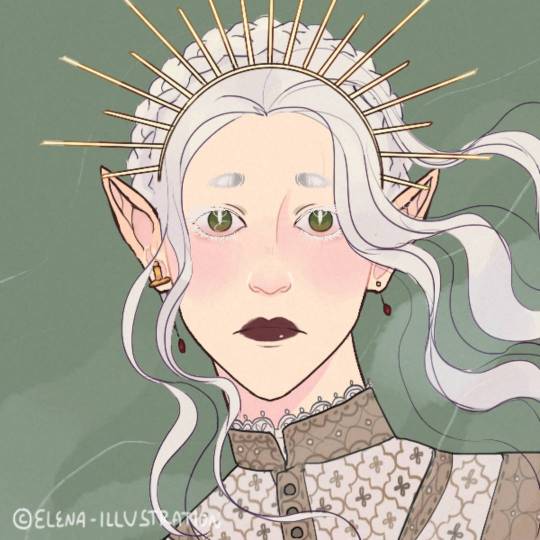

I tag @queenbol, @perilegs, @notebooks-and-laptops, and literally anyone else who would like to join in! no pressure though<3
#i've been.....Obsessed with this picrew for like a few weeks now#i've been making so many versions of them and full transparency here i did modify the last three inquisitors in like an editing app#cause they didnt look complete without some extra lovin' 😩 i hope thats an okay thing to do#picrew#dragon age#dragon age oc
11 notes
·
View notes
Text
second letter writer just started submitting their letters to my schools. omfg. now i'm just waiting on follow-up from my third one who said she'd have time to finish in the second half of the month... fingers crossed that doesnt fall through if it does im very fucked lol.
#grad app woes#i also have like three of my sops done and customized#i need to finish the rest & the additional statements etc.#and finishing deep editing one of my short stories for submission#all in the like... next two and a half weeks lol#bc i want to submit to EVERYWHERE before dec. 1#so that i can enjoy my long thanksgiving weekend#i've been so busy at work i dont know if i can but im gunning for it#but seriously having the recommenders submit makes it feel way more real like omg i AM actually applying this time around#i stopped and started grad school apps like three separate times in the past lol#liveblogging life
0 notes
Text
Can't believe I keep getting good grades in piercing aftercare and healing, something that is both normal to want and possible to achieve
#well actually it is possible to achieve#three out of three times I got a good grade#i keep being told that I did a great job with the cleaning and healing and the wound looks perfect <3#i reached the peak today#i had to get my bridge piercing changed to one with a shorter bar seeing that it's been two weeks since I got it#and the guy was so enthusiastic he told me if I ever want to do a second bridge piercing he'll do it for free <3#because it's a fun piercing to do and nobody asks to get that anymore AND because mine was healing perfectly#🥰#guysssss#update#the piercer should NOT have mentioned the chance of getting a second bridge piercing#i've been thinking about it ever since because I was not interested in it prior to that#but fuck I edited a pic of my face to see what a double bridge piercing would look like on me and I REALLY like it#😭😭😭#guess that this bitch will be back to get pierced after my next blood donation
0 notes